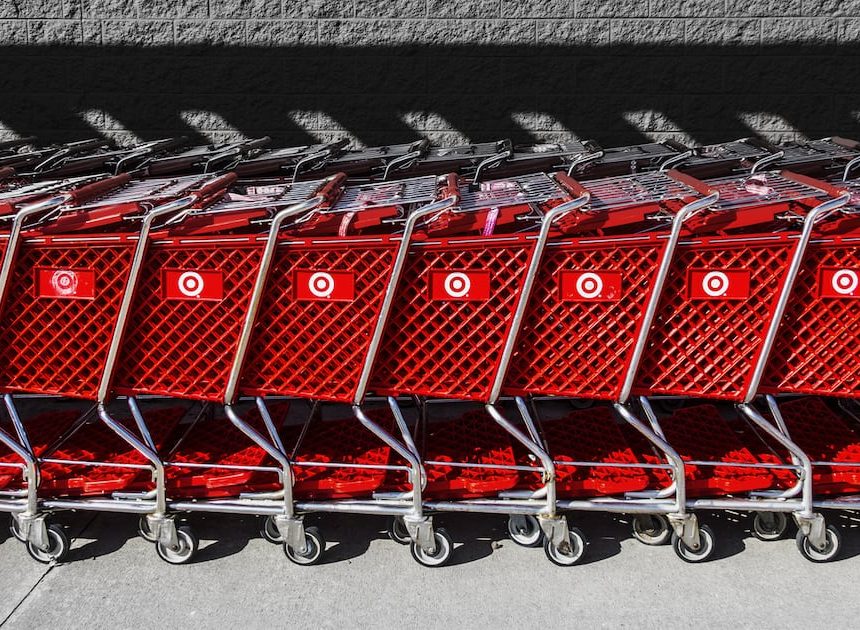Subscribe to The Frayed Edge by Sarah Kent, a weekly newsletter on how to build a cleaner, fairer fashion system.
It’s Friday! I’m back with more on luxury’s supply-chain scandals and Europe’s regulatory flip flops. Yes, I know we’ve been covering this a lot recently, but these are important topics, and honestly, there has been some high drama in Brussels this week.
I’m also checking in on material innovation, which has gotten a bad rap of late thanks to a string of high-profile failures. Unfortunately, this is more bad news, with Mycoworks (the mushroom-based leather startup that got a stamp of approval from Hermès) announcing a major restructuring. But innovators are increasingly keen not to let negativity dominate the narrative. Strategic pivots are a sign of a maturing market, not of failure, they argue.
Finally, don’t miss out on your chance to attend this year’s BoF VOICES. It’s the tenth edition of the annual gathering for big thinkers and has an incredible line up. I’m particularly looking forward to the conversation senior correspondent Sheena Butler-Young is set to have with Clare Waight Keller and Maria Cornejo. Why does fashion have such a complicated relationship with women? You better believe they’ll get into it.
As always, send me thoughts, feedback, tips and questions.
Anatomy of a Luxury Scandal: Downplay, Distract, Discredit
How do you solve a problem like a long-running and escalating scandal linking luxury brands to Italian sweatshops — an issue that strikes at the heart of the sector’s value proposition and core brand narratives?
Don’t worry, there’s a playbook for that.
Step one: downplay the issue
Take note of the carefully controlled, and very similar, statements from brands that have been caught up in the Italian investigation, which alleges consistent gaps in corporate supply-chain controls have enabled a system where brands turn a blind eye to labour exploitation in order to maximise profits.
Here’s the formula for response: issue a brief mea culpa, but note that any issues were truly exceptional and not reflective of how the company actually operates. Finally, emphasise that steps are, or ideally already have been, taken to make sure it never happens again.
If further questions come up, refer back to the statement above. Any additional comment feeds the beast and keeps the story in the news cycle. Bad.
Step two: distract
This is where luxury excels.
There’s always a glitzy show or new product drop around the corner to get people talking about anything else. And it’s extremely effective. I’d bet a Loro Piana cashmere jacket that plenty of the brand’s customers aren’t even aware that it’s been dinged for links to illegal factories, where undocumented workers toiled up to 90 hours a week for a few euros an hour.
If they are, they don’t care. As owner LVMH noted last week, the brand’s performance has been “excellent” in the quarter since the news broke.
Step three: discredit
If the story still won’t go away — for instance new evidence or allegations keep coming to light — poke holes in it.
This is better done through proxies, like trade organisations or in off-the-record asides with key thought leaders. A little eye roll here, a suggestion that the whole thing is really “fake news” there, or a nod to the idea that it’s all been blown out of all proportion at a friendly industry gathering.
Similar tactics have been deployed by industries from big oil to big tobacco, usually in the hopes of staving off costly interventions required by regulators or needed to mollify negative consumer sentiment.
Without a strong counterforce, they are usually very effective.
For more on this, keep an eye out for the story Eric Sylvers and I have coming next week, which breaks down how luxury’s response to its Italian troubles is evolving, and the impact that’s having.
The EU’s Regulatory Rollercoaster

Remember how last week the European Parliament seemed poised to majorly water down a series of flagship sustainability rules?
Well guess what? Now the whole thing’s back up for discussion.
As a reminder, these are rules that are set to govern how big brands report on their environmental impact and whether they are accountable for environmental and labour abuses in their supply chains. Meaty topics that have played a big part in driving the industry’s engagement on sustainability over the last few years.
I won’t bore you with details of the bureaucratic process here, but tl;dr MEPs have rejected text approved by a subcommittee last week and will now vote on a series of amendments in an upcoming November session.
This is edge-of-the-seat stuff by regulatory standards. And there’s more….
The Intrigue
This is not just a European story and the regulatory rethink isn’t happening in a vacuum.
Earlier this week, the US and Qatar piled in with a letter threatening European energy supplies if tougher due diligence rules are enacted.
Because I am both an energy and history nerd, indulge me in going a little deeper here. As Axios noted earlier this week, what we’re seeing emerging at the moment is probably the most fraught landscape for energy flows since the 1970s oil embargo era. Back then, major Middle Eastern oil producers stopped shipping crude to the US, Europe and elsewhere in retaliation for their support of Israel during the 1973 Yom Kippur war.
The move spiked oil prices and shaped 50 years of energy policy, with the US doggedly pursuing independence from imports (thank you fracking) and consistently painting the Organisation of Petroleum Exporting Countries, a grouping of big oil-producing nations, as a shady cartel bent on manipulating global markets.
It is wild for America to now be playing this same role.
That’s not the only topsy turvy thing here.
Germany and France, two countries that actually already have versions of Europe’s due diligence law written into domestic legislation, have emerged as hawks, calling on the bloc to scrap the rule entirely.
What’s the read-through for fashion?
I don’t know what to say except expect the unexpected. We seem to be in an “anything goes” era politically and companies should plan accordingly.
On this note, I had an interesting conversation earlier this week with a senior executive at a large brand. When I asked how his company is navigating this current moment of turbulence, he told me they’re doing a lot more risk-based scenario planning. Maybe it’s time to start hiring in some chief risk officers.
Looks Like Hermès Won’t Be Making Mushroom Leather Handbags

There was a moment, mid pandemic, when mushrooms were all the rage.
Fungi were pitched as cure-all for anxiety, low energy levels and even bad skin. Fashion embraced the idea of new materials made from mushroom root structures that one day might replace even entrenched staples, like leather.
We hosted a whole session on the topic at BoF VOICES and even Hermès got in on the action, quietly partnering with mushroom-based “leather” innovator, Mycoworks.
But, you guessed it, things have not quite played out as advertised.
Startups have stumbled, funding has dried up and Hermès has yet to bring any mushroom-based products to market. Increasingly, it looks like it never will.
Late last week, Mycoworks CEO Matt Scullin posted an open letter on LinkedIn to announce a major pivot: instead of trying to grow and develop its own material, the company is shifting focus to operate as a service provider. It’s shutting down its plant in South Carolina and pitching instead the proprietary technology it’s developed for “tanning” mycelium — the root structure of mushrooms that typically serves as the base for funghi-linked leather alternatives.
Mycelium can be grown more cheaply elsewhere, Scullin wrote in his post. But wherever it’s produced would-be leather replacements run into similar challenges: they’re just not as strong or durable as the real thing. Mycoworks’ patented technology for processing mycelium changes this equation, he added.
It was a clear effort to project a “future is bright” message amid a major restructuring.
“With these necessary shifts in our business model we will continue to lead the mycelium leather industry into an age of widespread adoption,” Scullin said.
We’ll see.
Whereas capital was abundant and cheap for innovators like MycoWorks just a couple of years ago, times have changed.
— Mycoworks CEO Matt Scullin
WHAT ELSE YOU NEED TO KNOW THIS WEEK:
- Fire Hits Bangladesh Exports: A massive fire at an airport cargo complex serving Dhaka airport caused extensive damage to goods and materials belonging to major garment exporters, with losses likely to run into millions of dollars. It’s the third major fire in the country in the last two weeks. [The Business of Fashion]
- Resale Cannibals: The thing luxury brands feared all along is happening: secondhand sales are stealing market share. While Gen-Z and millennial shoppers have been defecting from the primary market, they’re the fastest-growing constituency on sites like The RealReal. [The Wall Street Journal]
- What Women Want: Does fashion have a clue? In this week’s episode of The Debrief, BoF colleagues Sheena Butler-Young, Cathaleen Chen and Diana Pearl break it down. [The Business of Fashion]
- Bad Credit: The world’s largest certifier of carbon offsets has determined that most of the credits from a massive forest-protection project in Zimbabwe, which powered the green claims of Volkswagen, Gucci, Nestle and McKinsey, were bogus. [Bloomberg]


